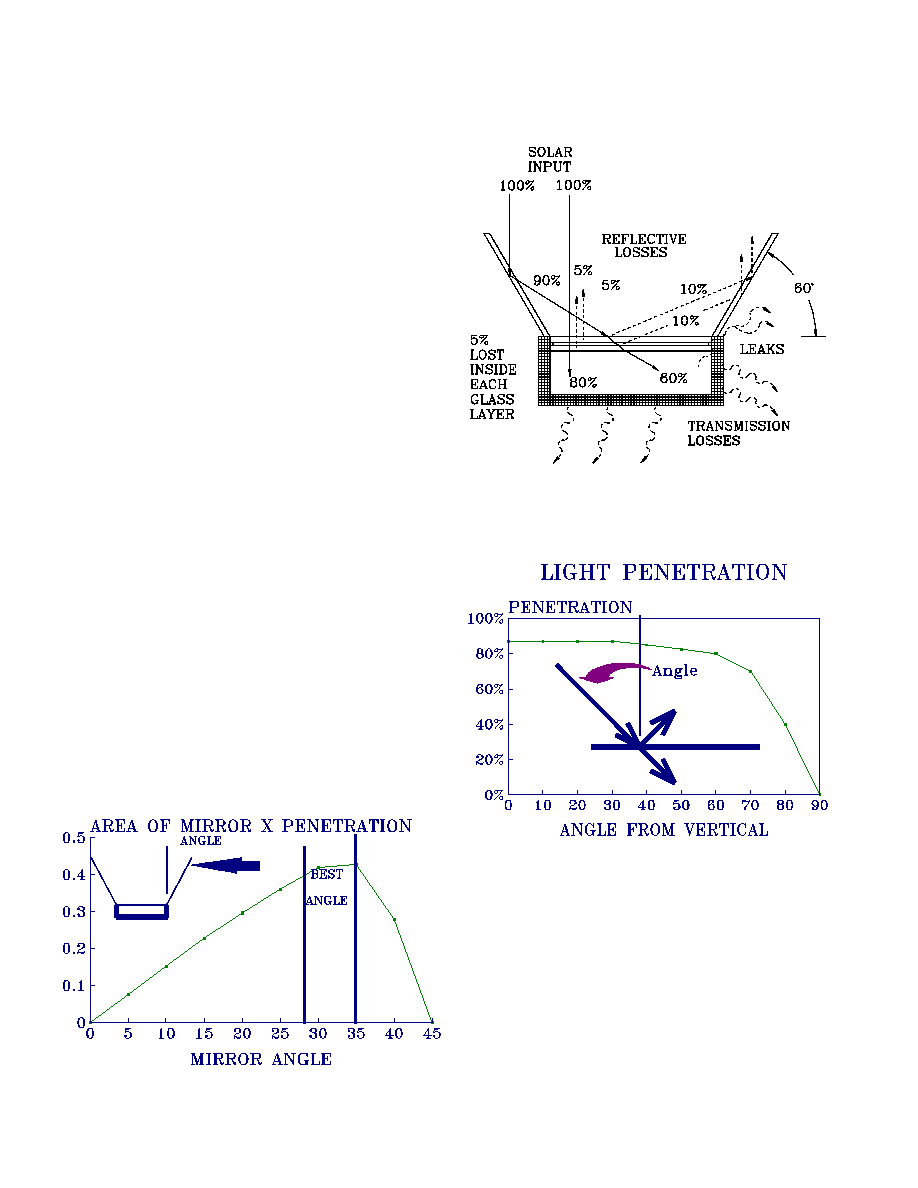
2
HOW SOLAR OVENS WORK
A solar oven's cooking temperature is
reached when the solar gain equals the heat
losses. Thus an oven's cooking temperature is a
balance between solar gain and heat losses.
Heat losses fall into five categories:
1. Reflective losses
2. Absorption Losses
3. Transmitted Losses
4. Leakage Losses
5. Food losses (Heat Lost To Cooking)
Solar gain is a factor of the total area
exposed to the sun and the effectiveness of
collection.
For the reflectors this property is
acceptable but for the cover glass, light must enter
the cooking chamber, or the mirrors are of no use. As a stone skipping across water, sunlight will skip
off the surface of glass without penetrating if the angle is too shallow.
An angle of about 30 degrees from the
vertical for the mirrors or reflectors yield good
penetration with a healthy spread for an optimum
use of materials. As it turns out a reflector equal
to the width of the cooking chamber produces an
optimum design for use of materials.
With such a fortunate set of circumstance
the reflectors can be folded to cover the cooking
chamber making the cooker portable!
Mirrors have a reflection of about 99% but lose
5% each time the light passes through the glass.
Polished metal surfaces have about 90% reflection but
no losses due to glass. The result is that each behaves
about the same.
Light striking the far edge of the reflector
should enter the cooking chamber at the far edge
opposite the reflector to be beneficial. An angle of 30

